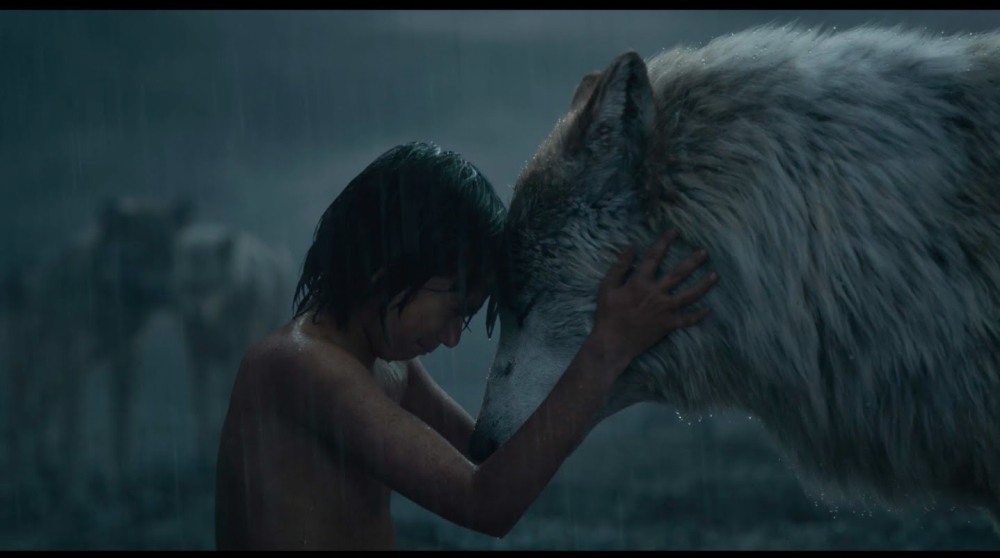
The Jungle Book
For a movie focused so heavily in the wild Jon Favreau’s Jungle Book shows a surprising amount of restraint. Almost every moment where a thematic element could be so easily exposited upon or conveniently voiced, the film chooses the high ground and sticks to an organic and subtle portrayal rather than a clumsy explanation. It seems at first blush like a film whose dialogue is so simple, whose plot points are so straight forward, whose themes have been explored many a time before (not least of all in Disney’s prior animated film of the same name and Rudyard Kipling’s original novels) that how could it still be so engaging, so emotionally impactful? Favreau answers by showing just how key execution can be, how some ideas are so primal that at this point they don’t need for characters to discuss them outright, but only to be supported by a stirring soundtrack and passionate performances in order to remain fresh.
As is delivered with bravado in the film: the strength of the pack is the wolf, and the strength of the wolf is the pack. The Jungle Book’s pack is composed of a multitude of big names, and each one brings a certain gravitas to their particular character: Idris Elba’s voice is ragged and menacing as Shere Khan, Ben Kingsley is gentle but authoritative as Bagheera, and etc. Bill Murray is of particular note as Baloo, imparting perhaps slightly more inflection than he is known for but maintaining the basis of his classic deadpan, creating a pitch of calm and optimism that the character truly requires. Baloo is a buddy whose laziness manages to be charming, he is funny just by being, and is, most importantly, sincerely relaxed.

A moment when the film shows it’s penchant for delivering the aforementioned nuggets of untamed ideology beneath the generous coating of bombastic adventure is the Peace Rock scene. When drought causes the water of the jungle to be so low that the Peace Rock is revealed, all animals partake in a water truce. Predators don’t hunt prey, and a temporary peace is established while all animals drink from a singular water source. The movie doesn’t pause to wax thematic here, though it does pause narrative and pacing wise. It’s a scene that develops what makes Mowgli Mowgli, and what makes him not a wolf. All the while in the background presenting the notion that peace is not something that arises when everyone has something, or when some are in comfort and others not, it is something that arises when everyone needs something. In another film, this might come across as a cuttingly cynical notion. But within the framework of The Jungle Book, a film filled with animal characters and taking place in the bounds of nature’s seemingly unchangeable law, it simply emerges as honesty. Kipling likely understood this, and the movie operates with the necessary rigor to make the audience feel it.
This frankness results in the emphasizing of certain concepts that can’t help but feel a little bit emblematic of the time. The 2016 Jungle Book is the Jungle Book where Mowgli doesn’t return to the humans in the end (why would he want to? They’re pretty frightening and destructive on average), and where the true lesson taught by the “Law of the Jungle” is that you shouldn’t try to be something you’re not: no matter how disparate a human and a wolf might be, they can work together. The way the film touches on identity and honesty with a little bit of self criticism adds layers to a story reinterpreted, making it enjoyable to look for small markers of generational difference in each telling.

There are so many moments in The Jungle Book that in the hands of others could seem ham-fisted or obligatory. But when you see Mowgli and his wolf mother parting ways in the rain, Lupita Nyong’o’s voice cracking in just the right moments as she tells her man-cub that he’ll always be her son before they solemnly touch heads, it matters little that the film has been running for a mere fifteen minutes. You feel it. Few films can get away with this, and not even every Jon Favreau film has had this kind of tight execution. But he pulls it off with aplomb here and creates a film where it seems like everyone involved in its production gave 110% in order to have this familiar story and these emotional elements not seem stale or trite. Their effort is rewarded with a tale of how finding oneself is not the same as finding others like you, where tried and true ideas don’t feel like tired cliche’. In the rugged and untamed jungle, they simply feel pure.

Works Cited
The Jungle Book. Dir. Jon Favreau. Perf. Neel Sethi, Bill Murray, Ben Kingsley. Disney, 2016. Film.
Image Citations